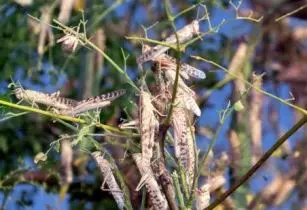The Food and Agriculture Organization of the United Nations (FAO) has developed the eLocust3m application to improve early warning through rapid detection, surveillance and monitoring of locust outbreaks
About 30 agricultural extension officers in Namibia, specifically, from the Ministry of Agriculture, Water and Land Reform (MAWLR) were trained on the use of the application. They were also acquainted with skills to operate the mobile phone application as a means to strengthen their locust monitoring and control efforts.
“The eLocust3m application will help us to assess the current situation on the ground and to warn us of the likelihood of an invasion,” said Margaret Matengu, chief agricultural extension officer of the Directorate of Agricultural Production, Extension and Engineering Services within the Ministry of Agriculture, Water and Land Reform (MAWLR), noting that times of crises are also times for innovation and collaboration.
The virtual training, was conducted by the FAO Subregional Office for Southern Africa Resilience Hub (FAO SFS REOSA) targeting the staff who are currently overseeing locust control operations in Namibia’s locust affected regions as well as non-affected regions.
The app is suitable for difficult and remote locations where monitoring can be a challenge and is designed for use in areas with no Internet connection, and can also be utilised by community members and smallholder farmers to report locust sightings.
Advance warning system
According to FAO, eLocust3m, an innovative data collection application helps to inform decision makers on which areas need attention and help to establish to what the extent the locust outbreak is in order to guide coordination and response efforts. In addition to identifying areas to target with spraying, eLocust3m enables FAO to provide advance warning to people who have not yet been affected by invading locust swarms.
Information obtained via the eLocust3m app is used to assess the current situation on the ground, forecast its development and warn locust affected countries and the international donor community of likely locust invasions and plagues.








